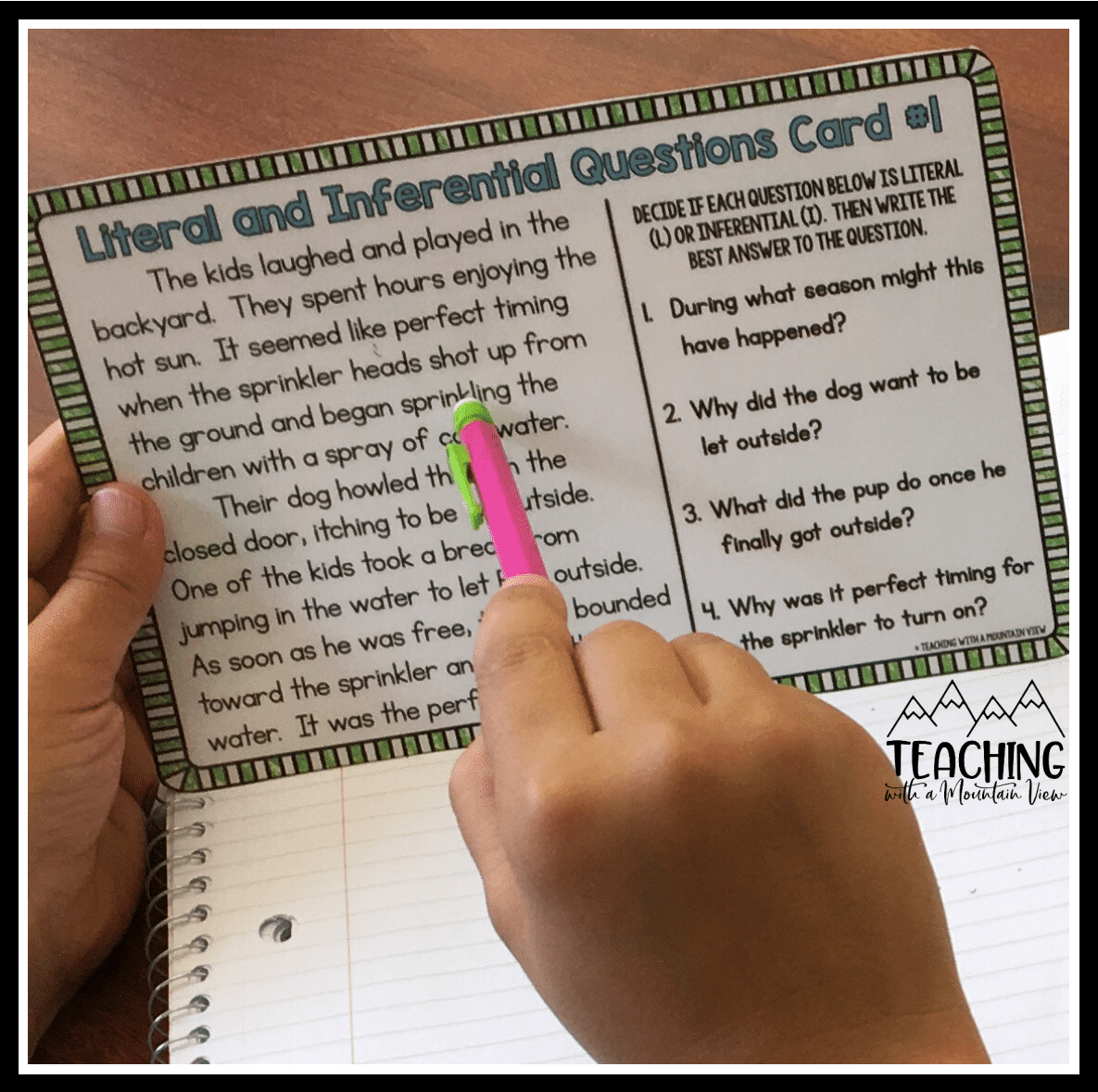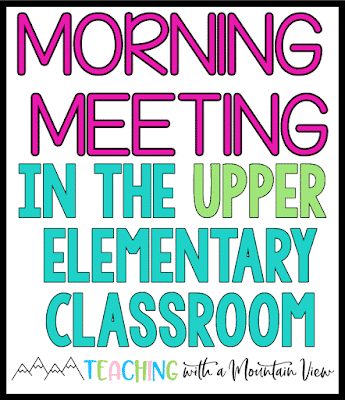- Literacy
- |
- Anchor Charts
- |
- Back to School
- |
- Literacy Anchor Charts
- |
- Reading Skills
- |
- Seasonal
- |
- Using Pictures to Teach
Teaching the Difference Between Literal and Inferential Observations
By Mary Montero
Share This Post:
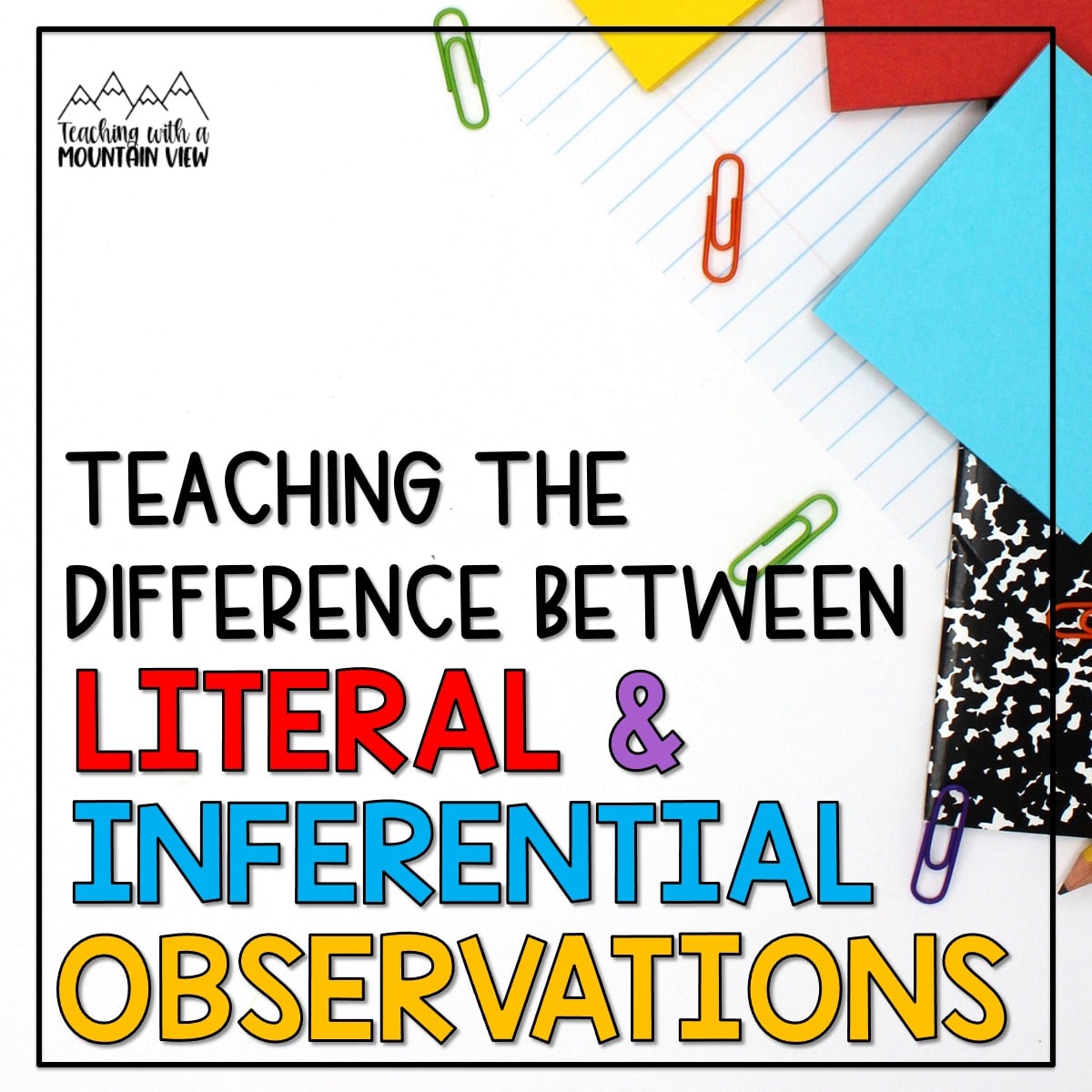
Teaching students the difference between literal and inferential thinking is one of my must-do lessons at the beginning of every single school year. No matter which elementary grade I’m teaching. I have talked about this so many times. So, I wanted to put all of these inference anchor charts in ONE PLACE for easy access!
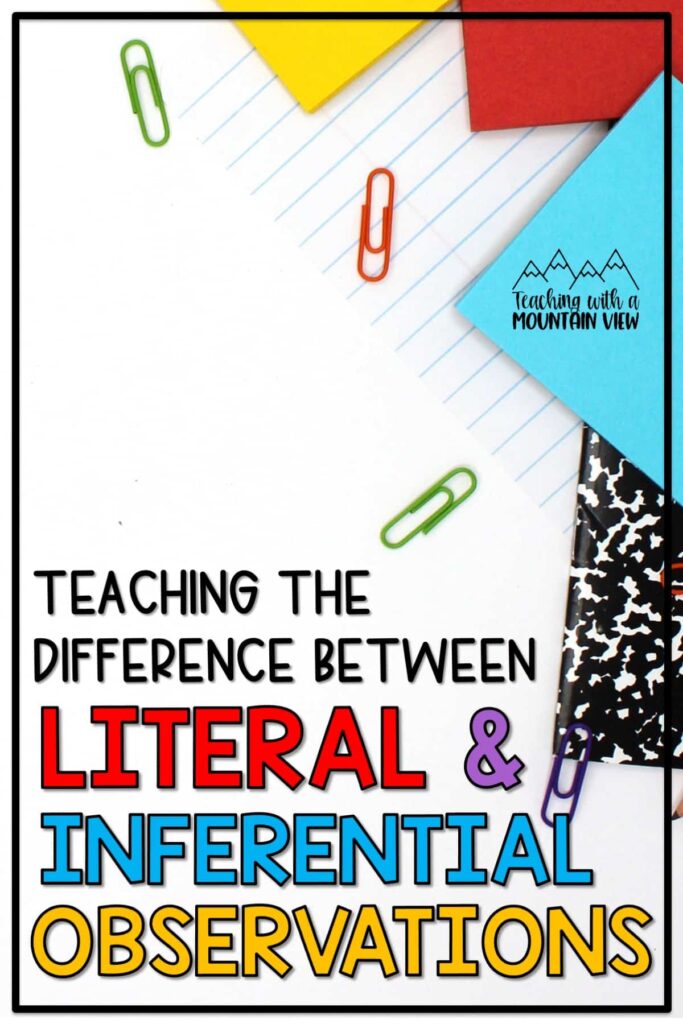
Introducing the idea of how we make an inference truly makes all the difference. This foundation of skills is crucial before we continue on with the rest of our reading skills and novels for the year!
Surprise, surprise! I start teaching this skill using a picture. If you have spent some time perusing my blog, you’ll know that I introduce just about every single reading skill by using a picture. You can read other posts about how I use pictures to teach reading and writing skills HERE and HERE.
Difference Between a Literal Observation and Inferential Observation
For this inference lesson, we begin by talking about the difference between a literal observation and the inferences we make based on those observations using our prior knowledge. Then we totally dissect a picture. It is so fun, engaging, and really solidifies understanding the difference between a literal observation and an inferential observation. It’s a quick lesson, but so, so meaningful.
I have done this introduction lesson a few different ways over the years, but it always leads to similar discussions. Here are a few of pictures of the inference anchor charts we created together as we discussed the difference between literal and inferential observations. You can do one or all four different variations over the course of a week to get your students really SOLID in their inference skills!
Inference Anchor Charts
This inference anchor chart was really easy to create (and done with third graders). The words in pink are LITERAL observations and the blue words describe the inference students make based on the inference.
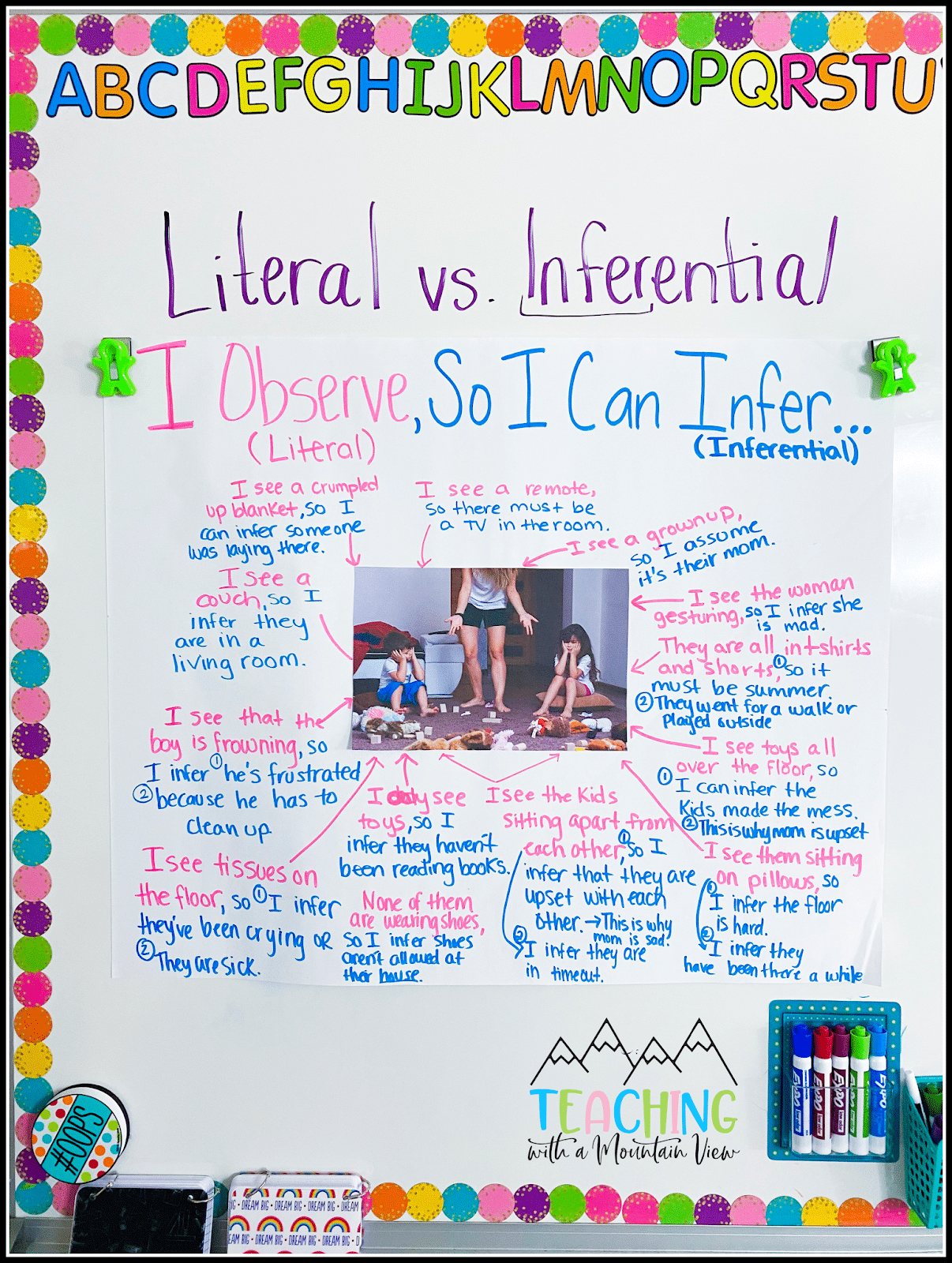
This anchor chart is slightly more advanced (I discuss it more on THIS observations blog post), and it was created with 4th and 5th graders. They each used their own sticky notes to come up with an observation and a follow-up inference based on that observation.
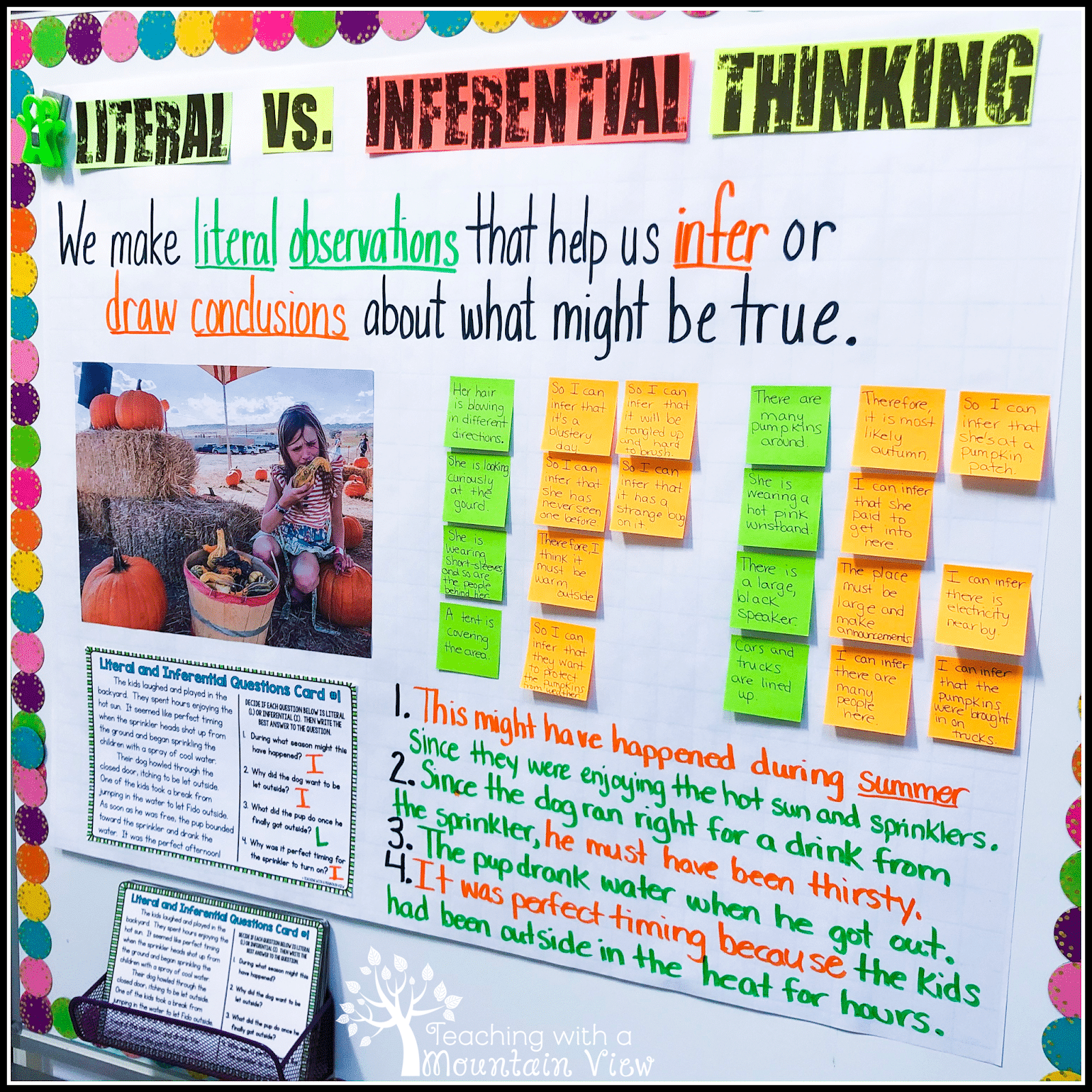
This anchor chart was made with 4th graders, and instead of connecting the two ideas, we totally separated them. I discuss this lesson more HERE in this literal vs. inferential thinking post.

This lesson was done with advanced 2nd graders. Who were just learning about the difference between literal and inferential thinking. It’s more basic, but still very impactful. It’s a great starting point.
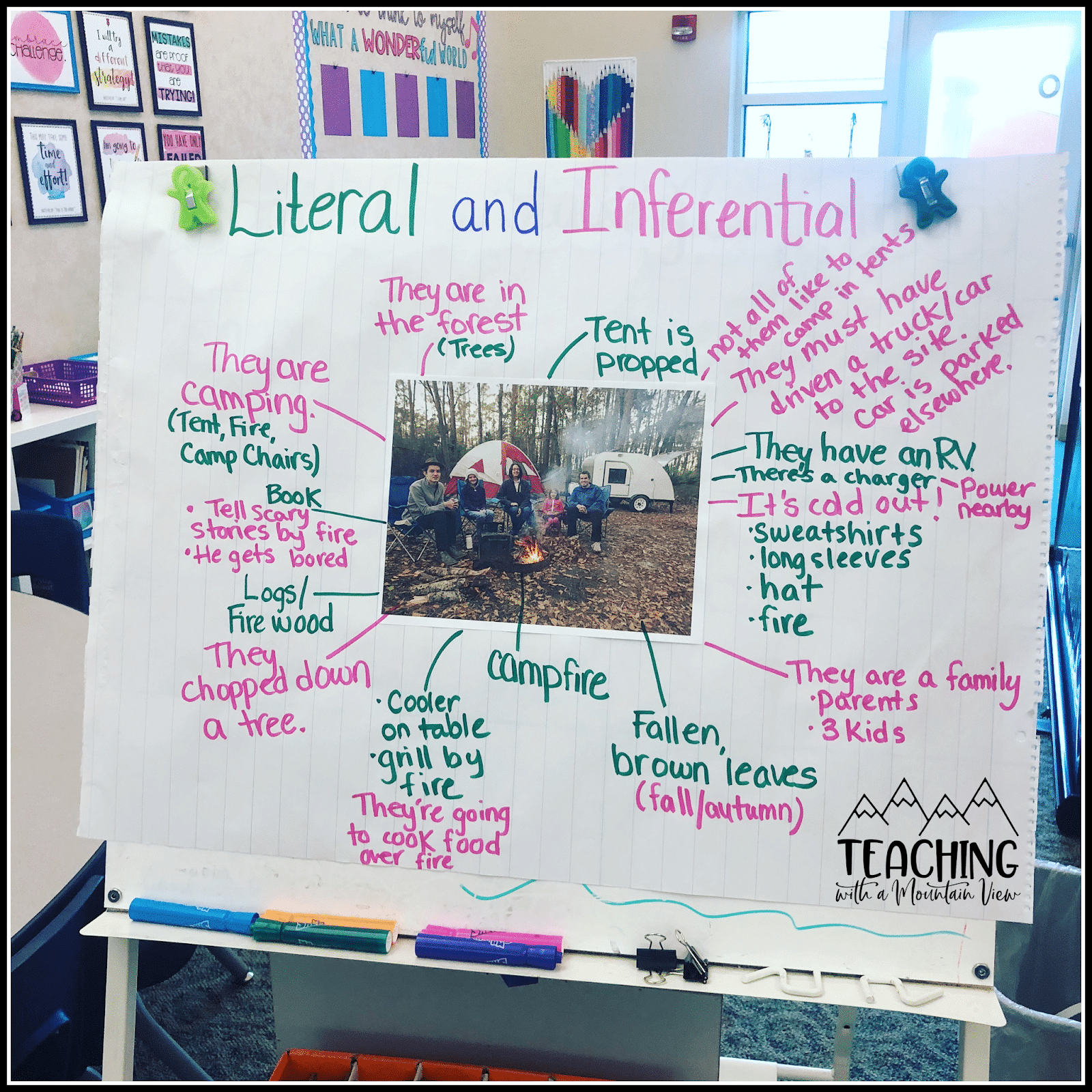
Making Inferences
I have my students work on making their own observe/infer charts. I’ve shared it here before, but you can download this free follow up inference lesson below.
After I feel like students have a good grasp of this, we slowly transition from inferring from pictures to inferring from texts. The students and I complete one Inference Using Pictures to Teach Reading Skills page together to introduce how this can be applied to our reading. You can access this resource Using Picture to Teach Reading Skills resource HERE (it includes similar pages for many other skills).
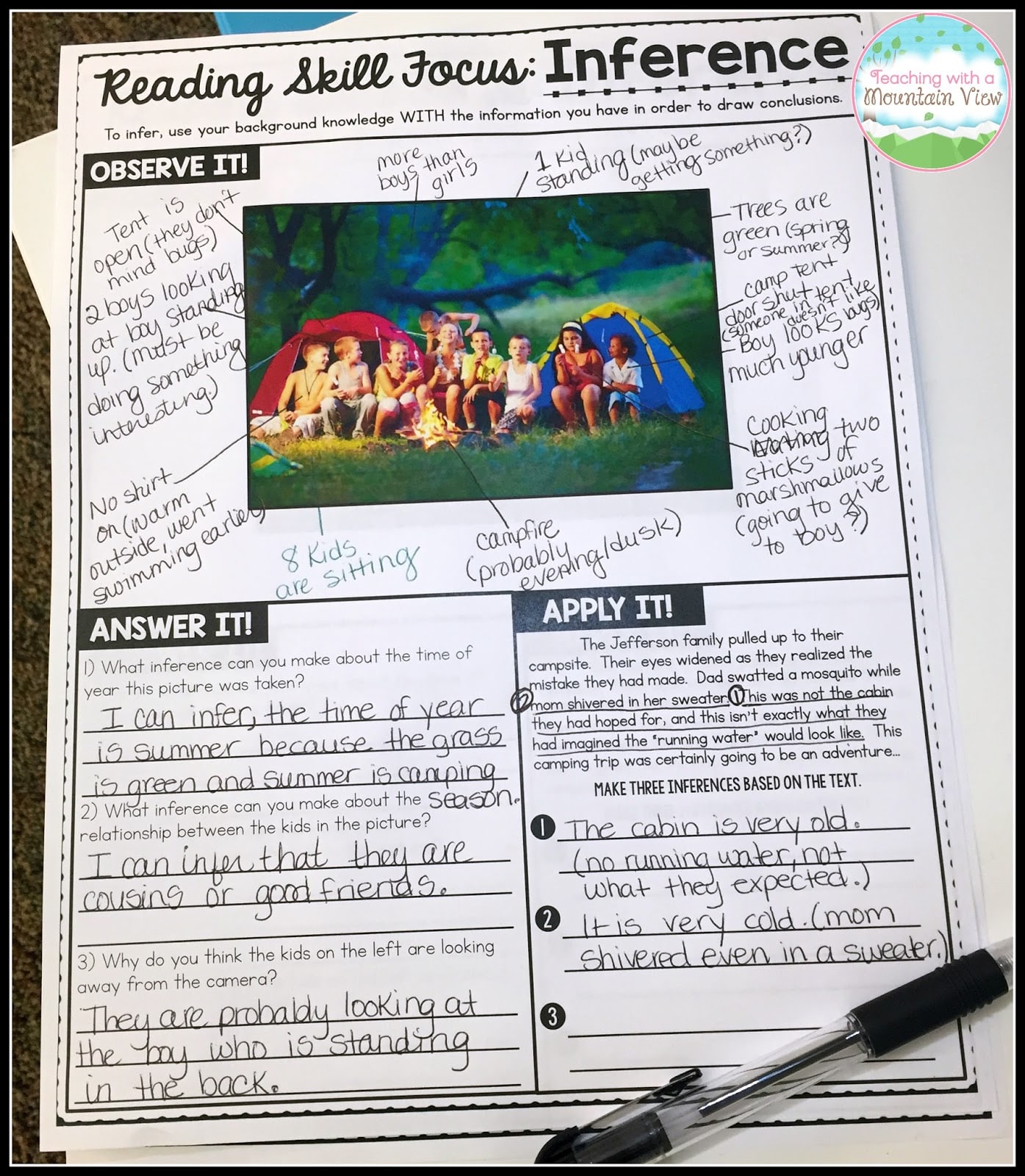
After we have completed several of these pages together over the course of several days. We transition to text only inferences using these literal vs inferential comprehension inference task cards.
With this foundation of learning, my students are ready to start tackling inferences in novels, read alouds, and more!
Mary Montero
I’m so glad you are here. I’m a current gifted and talented teacher in a small town in Colorado, and I’ve been in education since 2009. My passion (other than my family and cookies) is for making teachers’ lives easier and classrooms more engaging.







